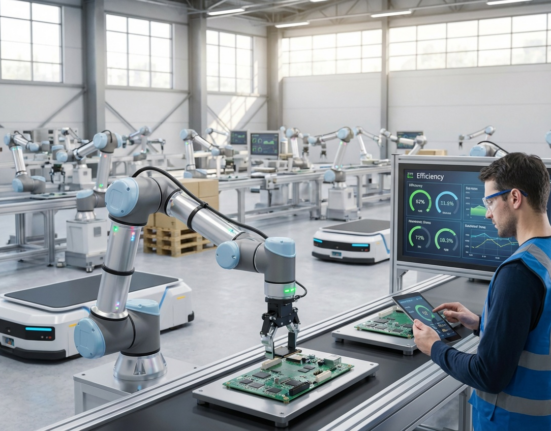Introduction: Why Change Management Matters in Robotics
Robotics is transforming industries at lightning speed. From assembly lines to logistics, automation is no longer a choice — it’s a necessity. But adopting robotics isn’t just about installing machines. It’s about people. Change management in robotics-driven workplaces ensures employees adapt, engage, and thrive alongside automation.
Understanding Change in Robotics-Driven Workplaces
Robotics-driven change involves integrating advanced automation systems while restructuring workflows, roles, and responsibilities to keep humans and machines aligned.
The Importance of Change Management in Robotics
Reducing Resistance
Clear communication eases employee fears about job loss.
Enhancing Adoption
Workers embrace robotics when they understand the benefits.
Building Confidence
Training and support create trust in new technology.
Driving Long-Term Success
Change management ensures robotics initiatives deliver measurable results.
Key Challenges in Managing Change
- Employee resistance to automation.
- Skill gaps among existing workforce.
- Costs of training and restructuring.
- Misalignment between leadership and staff.
Strategies for Effective Change Management in Robotics
1. Communicate Early and Often
Transparency reduces uncertainty and builds trust.
2. Involve Employees in Planning
Workers feel ownership when they participate in decisions.
3. Provide Training and Upskilling
Equip staff with skills to work confidently alongside robots.
4. Highlight Human-Robot Collaboration
Show that robots support rather than replace human roles.
5. Celebrate Small Wins
Recognizing progress keeps momentum strong.
The Role of Leadership in Change Management
Leaders set the tone by aligning goals, supporting teams, and modeling adaptability during the robotics transition.
Training Programs That Support Change
- Vendor-led robotics training (e.g., ABB, FANUC, KUKA).
- Online learning platforms covering automation basics.
- On-the-job workshops and peer mentoring.
Cultural Shifts in Robotics-Driven Workplaces
A robotics-ready culture values adaptability, innovation, and teamwork. Upskilled employees feel empowered to work alongside technology instead of competing with it.
Case Studies of Robotics Change Management
Automotive Industry
Auto plants integrated robots by retraining workers for programming and maintenance.
Healthcare
Hospitals introduced cobots for sterilization with staff-led pilot projects.
Logistics
Warehouses eased adoption by involving workers in cobot selection.
Future Trends in Change Management for Robotics
AI-Supported Training
Adaptive tools that personalize upskilling journeys.
Employee-Centered Automation
Designing robotics around human needs and workflows.
Global Standards
Frameworks to guide ethical and transparent adoption of robotics.
Balancing Technology and People
Robotics alone doesn’t guarantee success. People do. Effective change management balances innovation with empathy, ensuring employees feel valued and supported.
Conclusion: Leading the Way Through Change
Change management in robotics-driven workplaces isn’t just about adopting machines — it’s about guiding people. With the right strategies, leaders can build a culture where employees and robots thrive together, driving productivity, safety, and innovation.
FAQ
1. What is change management in robotics-driven workplaces?
It’s the process of helping employees adapt to automation while aligning technology with business goals.
2. Why is change management important in robotics adoption?
It reduces resistance, builds confidence, and ensures long-term success.
3. What are the biggest challenges in robotics change management?
Resistance, skill gaps, training costs, and leadership misalignment.
4. How can leaders manage change effectively?
By communicating clearly, involving employees, and offering continuous training.
5. Which industries benefit most from robotics change management?
Manufacturing, healthcare, and logistics are leading adopters.








